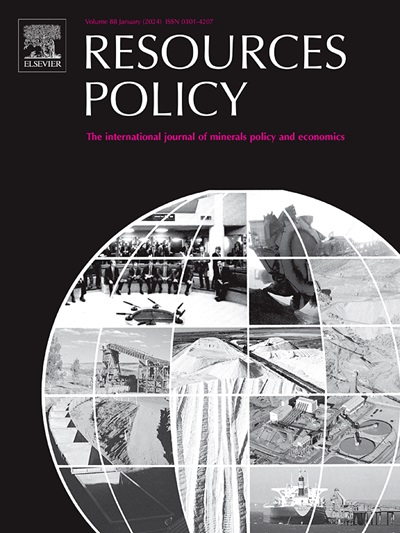黄金、铜、化石燃料和主要股票市场之间的联系:对投资组合管理的影响
IF 10.2
2区 经济学
0 ENVIRONMENTAL STUDIES
引用次数: 0
摘要
本研究利用Antonakakis等人(2020)的时变参数向量自回归(TVP-VAR)模型,探讨了商品期货(铜、布伦特石油、天然气和黄金)与日本、法国、加拿大、德国、美国、中国和意大利关键股票市场之间的动态联系。此外,我们通过依赖最小方差投资组合(MVP)、最小相关投资组合(MCP)和最小连通性投资组合(MCoP)方法,以及使用Broadstock等人(2022)方法,使用多元最优权重和对冲比率来分析投资组合设计。结果表明,法国和德国股市的收益是网络中主要的冲击驱动因素。然而,天然气对电网的冲击最小,可以用作对冲资产。此外,所有商品市场都是系统中的净冲击接受者。在极端事件期间,大宗商品和股票市场之间的溢出效应会急剧上升。然而,结果显示,在MVP和MCP方法下,无论市场状况如何,投资者都应该持有更多的黄金而不是其他商品。此外,我们表明,具有显著对冲有效性(HE)值的最便宜策略是正常模式下的上海证券交易所(CN)/布伦特原油,看跌模式下的德国和上海证券交易所/布伦特原油,以及看涨模式下的黄金/意大利和布伦特原油。相反,最昂贵的策略是正常模式下的布伦特原油/加拿大,看跌模式下的意大利和德国/法国,看涨模式下的黄金/意大利和布伦特原油。本文章由计算机程序翻译,如有差异,请以英文原文为准。
Connectedness between gold, copper, fossil fuels, and major stock markets: Implications for portfolio management
This study explores the dynamic connectedness between commodity futures (copper, Brent oil, natural gas, and gold) and pivotal stock markets in Japan, France, Canada, Germany, the U.S., China, and Italy using the time-varying parameter vector-autoregressive (TVP-VAR) model of Antonakakis et al. (2020). Moreover, we analyze portfolio design using multivariate optimal weights by relying on the Minimum Variance Portfolio (MVP), Minimum Correlation Portfolio (MCP), and Minimum Connectedness Portfolio (MCoP) approaches, as well as bivariate optimal weights and hedge ratios using the Broadstock et al. (2022) method. The results show that the French and German stock market returns are the main shock drivers in the network. However, natural gas is the least contributor of shocks to the network and can be used as a hedge asset. Furthermore, all commodity markets are net shock receivers in the system. The spillovers between commodity and stock markets experience a jump during extreme event periods. However, the results reveal that investors should hold more gold than other commodities to equity portfolios, irrespective of market status, under the MVP and MCP approaches. Moreover, we show that the cheapest strategies with significant hedging effectiveness (HE) values are the Shanghai Stock Exchange (CN)/Brent oil in normal mode, Germany and the Shanghai Stock Exchange/Brent oil in bearish mode, and gold/Italy and Brent oil in bullish mode. Conversely, the most expensive strategies are Brent oil/Canada in the normal mode, Italy and Germany/France in the bearish mode, and gold/Italy and Brent oil in the bullish mode.
求助全文
通过发布文献求助,成功后即可免费获取论文全文。
去求助
来源期刊

Resources Policy
ENVIRONMENTAL STUDIES-
CiteScore
13.40
自引率
23.50%
发文量
602
审稿时长
69 days
期刊介绍:
Resources Policy is an international journal focused on the economics and policy aspects of mineral and fossil fuel extraction, production, and utilization. It targets individuals in academia, government, and industry. The journal seeks original research submissions analyzing public policy, economics, social science, geography, and finance in the fields of mining, non-fuel minerals, energy minerals, fossil fuels, and metals. Mineral economics topics covered include mineral market analysis, price analysis, project evaluation, mining and sustainable development, mineral resource rents, resource curse, mineral wealth and corruption, mineral taxation and regulation, strategic minerals and their supply, and the impact of mineral development on local communities and indigenous populations. The journal specifically excludes papers with agriculture, forestry, or fisheries as their primary focus.
 求助内容:
求助内容: 应助结果提醒方式:
应助结果提醒方式:


